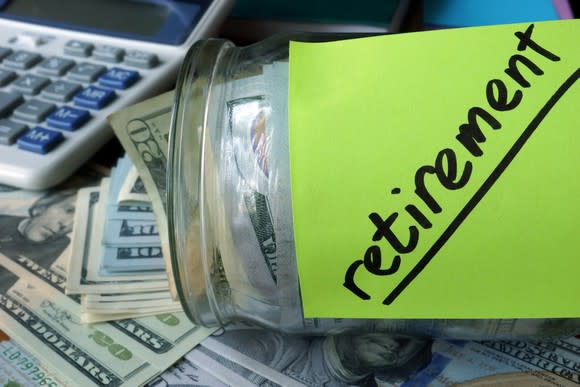3 Hidden Investing Costs You Can't Afford to Ignore
When you invest, every dollar you spend on expenses is one less dollar you'll have to go toward your financial goals. In fact, because of the power of compound returns, paying $1 in fees now can cost you $10 or even $100 down the road in retirement. That's the reason why so many smart investors focus on paying as little as possible in commissions for stock trades, sales loads and annual expense ratios for mutual funds and exchange-traded funds, and surrender charges and high rider costs on annuities and other insurance products.
Yet there are hidden investing costs that most investors don't think about as much as they should, as a recent promotional study from investment advisor United Income discussed. With a rising number of robo-advisors featuring low expenses, it's important to turn your attention to these often-ignored costs that can turn what looks like a low-cost solution into a financial disaster. Fortunately, there are steps you can take on your own without having to pay up for more outside advice than you really need.

Image source: Getty Images.
1. Poor tax planning
In terms of costs, taxes are far from a hidden expense. But many people don't realize that if they give more consideration to taxes when they're plotting out an investment strategy, they can get much better after-tax returns.
Unnecessarily high taxes can come from many sources. Failing to take full advantage of tax-favored investment accounts like IRAs and 401(k)s over the course of your career can force you to siphon off a portion of your savings every year to pay the tax man. Many low-cost fund options aren't efficient from a tax standpoint, failing to take advantage of opportunities to harvest tax losses and selling off high-gain assets at inopportune times from a tax perspective. Even after you retire, having imbalanced exposure among traditional and Roth IRAs and 401(k) accounts can force you to bear a high tax burden when you start withdrawing from your retirement savings, especially if your spending needs prove to be less predictable than you initially anticipated. Foreseeing these and other tax issues can lead to reduced tax bills that will boost your ending nest egg considerably.
2. Improper portfolio positioning and risk management
A host of low-cost investment options like target date maturity funds use generic investment strategies to simplify investing. Those strategies typically involve owning riskier investments early in life and then growing more conservative as you approach and enter retirement. In reality, however, there's no one-size-fits-all strategy that works for everyone, and if you take your own personal situation into account, you'll be able to put together a portfolio that recognizes your financial needs and risk tolerance more effectively.
For instance, if you know that your life expectancy is considerably different from average, then the strategy a typical low-cost retirement-oriented fund follows won't properly address your personalized time horizon. Similarly, the timing of when you expect to spend your savings is important, as those who plan to focus their spending early in their retirement years should invest differently from those who want to preserve savings into their 80s and 90s. Investing too conservatively can produce subpar returns that will cost you hundreds of thousands of dollars over the course of your lifetime, while investing too aggressively can mean that an ill-timed market downturn can deal a crushing blow to your investments right when you need money to spend.
3. Neglected consideration of Social Security and Medicare
Almost no low-cost investment services offer advice beyond the investing realm. For most Americans, though, Social Security plays a more important role in providing financial support in retirement than savings, and making smart choices about Medicare coverage can make a big difference in how much you end up paying on healthcare expenses that can easily top the $250,000 mark over the course of your golden years.
When you claim Social Security is one of the most important financial decisions you'll make in retirement, but the ideal decision takes into account several factors. Choices on when and how much income to draw from taxable and tax-favored retirement accounts, whether married couples choose to retire at the same time or stagger their retirements, and how to adjust investment portfolios to account for benefits all affect your financial situation in retirement. Similarly, picking Medicare options that fit well with your health condition can save you money in premiums and out-of-pocket costs.
Take hidden costs into account
United Income has its own motive to reveal and analyze these costs in its study. It argues that its own proprietary wealth management solution is a relatively low-cost service that takes these often-ignored investing costs into account.
In my opinion, the better solution is for you to take control of your own financial situation. You can use low-fee investments as tools, but your broader financial strategic plan has to include issues like Social Security and Medicare, asset allocation, risk management, and tax considerations. If you make allowances for your own personal needs as you plan your investments, your results will be far better than if you just take a cookie-cutter approach toward your finances.
More From The Motley Fool
The Motley Fool has a disclosure policy.

